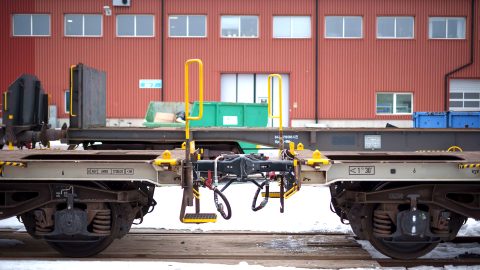Software as a service makes digitalisation for everyone

Digitalisation is the future for rail freight, but how much of it is already here? According to Rikko Kleijweg, digitalisation is closer than we think. It is becoming a solution for all of us, he explains in an interview.
Working for the IT firm Ab Ovo, the rail expert writes an annual blog about the rail trends of the year. According to him, digitisation of the transport chain ranks first. “There is a clear consciousness about the need to develop, an aspiration of the market towards a better digital collaboration.”
No longer exclusive
This development is no longer exclusive to the larger railway undertakings or companies, he believes. Also smaller companies are accepting the need to digitise their business. And this is a good thing because that makes it possible to exchange information with a much larger share of the market.
“There are several levels of integration, but it starts with the (bilateral) timely exchange of data and continuous updates to reflect the inevitable changes that will affect the whole transport chain. The next levels are in expanding the integration from bilateral to all partners and in processing the data ‘over the transport chain’, which will add control and insights, decision support on resources, capacity, and solving issues in an optimal way and on a higher level”, he writes.
Exchange of information
Electronic exchange of data does not come automatically, he continues. “TAF TSI has already existed for nearly twenty years, but it is picking up now. More and more messages are exchanged through the digital system and TAF TSI could be an accelerator for further digitisation because it is at the core of the rail business processes.”
A new initiative is the electronic Freight Transport Information (eFTI). “The idea is that all transport that is carried out is reported, and finally collected in Integrated and interoperable information systems (accessed as one large electronic system). In this way, we have a much better picture of what moves through Europe, and this information can be used to adjust the transport chain. The messages will be exchanged through the digital system, rather than through paperwork. The more companies are involved, the more transparent the information becomes. And then we all have equal access to the same quality of information.”
Another example Kleijweg mentions is the electronic consignment note and ‘paperless driving’ processes, the replacement of the paperwork that is required to come along with each consignment. The functional and technical requirements were already finalised around 2010. The IT platform to enable the electronic consignment note is in place. Yet, the market is only starting to pick up on the possibility now.
Financially available
One of the reasons that digitalisation is making headways is that it is financially more available than it used to be. There are different price models. In the past, acquiring an IT solution required upfront investment. Nowadays, it is possible to pay per user, profit, train, or container.
Also, the software is becoming a service, he explains. “Companies still do not always understand what they need to do, what is coming for them. But the good thing is that you can outsource everything. It is no longer needed to have a server or administrator to digitise a business. You can unburden yourself.”
You just read one of our premium articles free of charge
Want full access? Take advantage of our exclusive offer






